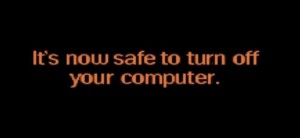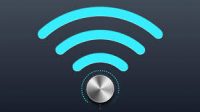We saw this article posted by HowtoGeek.com by Chris Hoffman and thought that it was worth sharing.
 Many computer users were trained never to turn their PCs off by pressing the power button on their desktop PC’s case. This used to cause problems in the previous millennium, but it’s now perfectly safe to shut down with the power button.
Many computer users were trained never to turn their PCs off by pressing the power button on their desktop PC’s case. This used to cause problems in the previous millennium, but it’s now perfectly safe to shut down with the power button.
This is especially useful on Windows 8, where there’s no obvious power button unless you know to look in the charms bar or the hidden Windows Key + X menu. But there is a power button — and it’s on your PC’s case.
Why Old Computers Couldn’t Handle This
If you ever used Windows 95 on an old computer, you’ll probably remember how you had to turn off the PC. You opened the Start menu, clicked Shut Down, and waited patiently for the computer to finish up whatever it was doing. When it was ready for you to shut down, you’d see the message “It’s now safe to turn off your computer” on your screen and you’d press the power button to shut it off.
The power button wasn’t very smart in those days. When you pressed it, it immediately cut power to the computer’s hardware. Just as you wouldn’t yank a desktop computer’s power cord out of the outlet while it was running today, you wouldn’t press the power button to shut off then. A sudden power cut means the computer won’t be able to shut down cleanly. You may lose work and the file system might be corrupted. If you did this on Windows 95, your computer would have to run ScanDisk when you booted it back up, attempting to repair all the damage caused by the shut down.
When you clicked Shut Down in Windows first, Windows wrapped up everything it was doing, closing all open programs and saving all data to the disk. Your computer wasn’t doing anything at all when that message appeared on your screen, so it was safe to cut power to it.
Why New Computers Can Safely Shut Down
Old computers used a pretty low-tech solution. Instead of suddenly cutting power to the computer, why couldn’t the power button send a signal to the computer’s operating system saying “Hey, it’s time to shut down, finish up what you’re doing” and let the computer shut down intelligently? And, when you did shut down from the operating system, why did you have to sit at the computer and wait to press the power button once everything was done? Why couldn’t the operating system say to the computer “it’s now safe to shut down, power off”?
These questions were answered by the Advanced Configuration and Power Interface (ACPI) standard, which new computers have used for more than a decade. When you press the power button on your computer’s case, it doesn’t suddenly cut power — it sends a signal to the operating system and tells it to shut down. The operating system can also understand multiple types of ACPI signals, which is how some laptops are able to have separate power and sleep buttons. And, when you click Shut Down in Windows, it uses ACPI to send a signal to your computer’s hardware, telling it to cut the power so you don’t have to press the power button by hand.
Windows 98 introduced support for ACPI, but it requires appropriate hardware. If you install a modern version of Windows on older hardware, you’ll still see the “It is now safe to turn off your computer” message and have to press the power button manually.
Holding Down the Power Button Still Cuts Power to the Computer
For this reason, there’s a way to forcibly cut power to your computer in case you ever run into a problem. Just press the power button and hold it down. After a few seconds, the power will be cut to your computer and it will suddenly shut down. This is normally a bad idea, as it can lead to lost data, file system corruption, and other issues. However, if your computer is frozen and the power button isn’t working, it’s a failsafe you have available. This allows you to power cycle laptops when you can’t remove the battery.
For more information on solutions for running your businesses’ technology more efficiently, visit our website or contact Megan Meisner at mmeisner@launchpadonline.com or 813 448-7100 x210.




